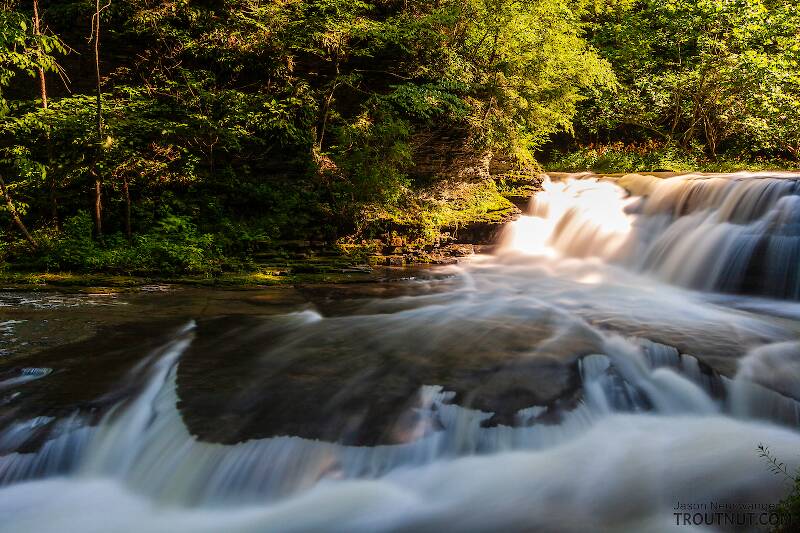
Salmonflies
Pteronarcys californica
The giant Salmonflies of the Western mountains are legendary for their proclivity to elicit consistent dry-fly action and ferocious strikes.


Mayfly Species Siphlonurus spectabilis (Gray Drakes)
Species Range
Physical description
Most physical descriptions on Troutnut are direct or slightly edited quotes from the original scientific sources describing or updating the species, although there may be errors in copying them to this website. Such descriptions aren't always definitive, because species often turn out to be more variable than the original describers observed. In some cases, only a single specimen was described! However, they are useful starting points.
Male Spinner
Wing length: 13 mm
A large pale species with speckled wings; hind wing of male orange-tinged.
Head whitish, with usual dark band across the median carina. No oblique colored band across the eye. Thorax yellowish brown; lateral and anterior margins of mesonotum reddish brown. A purplish streak anterior to the wing roots; an oblique reddish brown streak across the mesopleura, from the base of the fore wing. Fore coxa with two black longitudinal streaks; middle and hind coxae with brown patches. Transverse dark band across mesosternum.
Fore leg shorter than body. Legs whitish, the fore femur and tibia, and all trochanters, yellowish. Fore femur reddish brown at apex, likewise fore tibia. Fore wing with a dark brown patch below the bulla in the radial space, and a dark triangle in the space of the sector below it. Several cross veins on costal margin and in wing disc margined. Yellowish at base, in anal region. Hind wing orange-tinged in male only. Large brown wedge-shaped spot in the radial space and the space of the sector below it; cross veins in the disc, and in the spaces beyond the radial fork, margined. Widened in the anal region, somewhat as in Parameletus.
Abdomen yellowish white, markings brown. Usual dark lateral triangles present; restricted to the postero-lateral angles and the lateral margin. Oval dark submedian spots rather indistinct. A longitudinal streak between these spots and the lateral triangles. Pale anterior triangles distinct in the antero-lateral angle, diffuse near median line. Tergites 7-10 reddish brown; a postero-lateral spine present on tergite 9. Ventrally, the oblique bands are broad, deep purplish brown in color, and united anteriorly to form dark U-marks. Sternite 9 purplish except for yellow lateral margins.
Forceps base and forceps purplish; penes reddish brown. No prominence on the inner margin of the forceps near the base; no clear separation of the basal segment from the long segment. Penes somewhat as in Siphlonurus alternatus, but with long narrow forward-projecting processes in addition (see fig. 121). Apical margin of forceps base slightly concave between the forceps.
Female Spinner
Subanal plate of female extended backward on its apical margin into a prominent median spine.
Nymph
Nymph has double gills on the first two abdominal segments only. Legs banded. Tergites 6 and 9 reddish. Ventrally, does not show pattern of imago, but has a dark triangle at the median line at the anterior margin of each sternite. Usual dark streak across the tails beyond the middle, but rather diffuse; orange-brown in color.
Start a Discussion of Siphlonurus spectabilis
References
- Arbona, Fred Jr. 1989. Mayflies, the Angler, and the Trout. Nick Lyons Books.
- Needham, James G., Jay R. Traver, and Yin-Chi Hsu. 1935. The Biology of Mayflies. Comstock Publishing Company, Inc.
Mayfly Species Siphlonurus spectabilis (Gray Drakes)
Species Range
Common Names
Resources
- NatureServe
- Integrated Taxonomic Information System
- Global Biodiversity Information Facility
- Described by Traver (1934)

